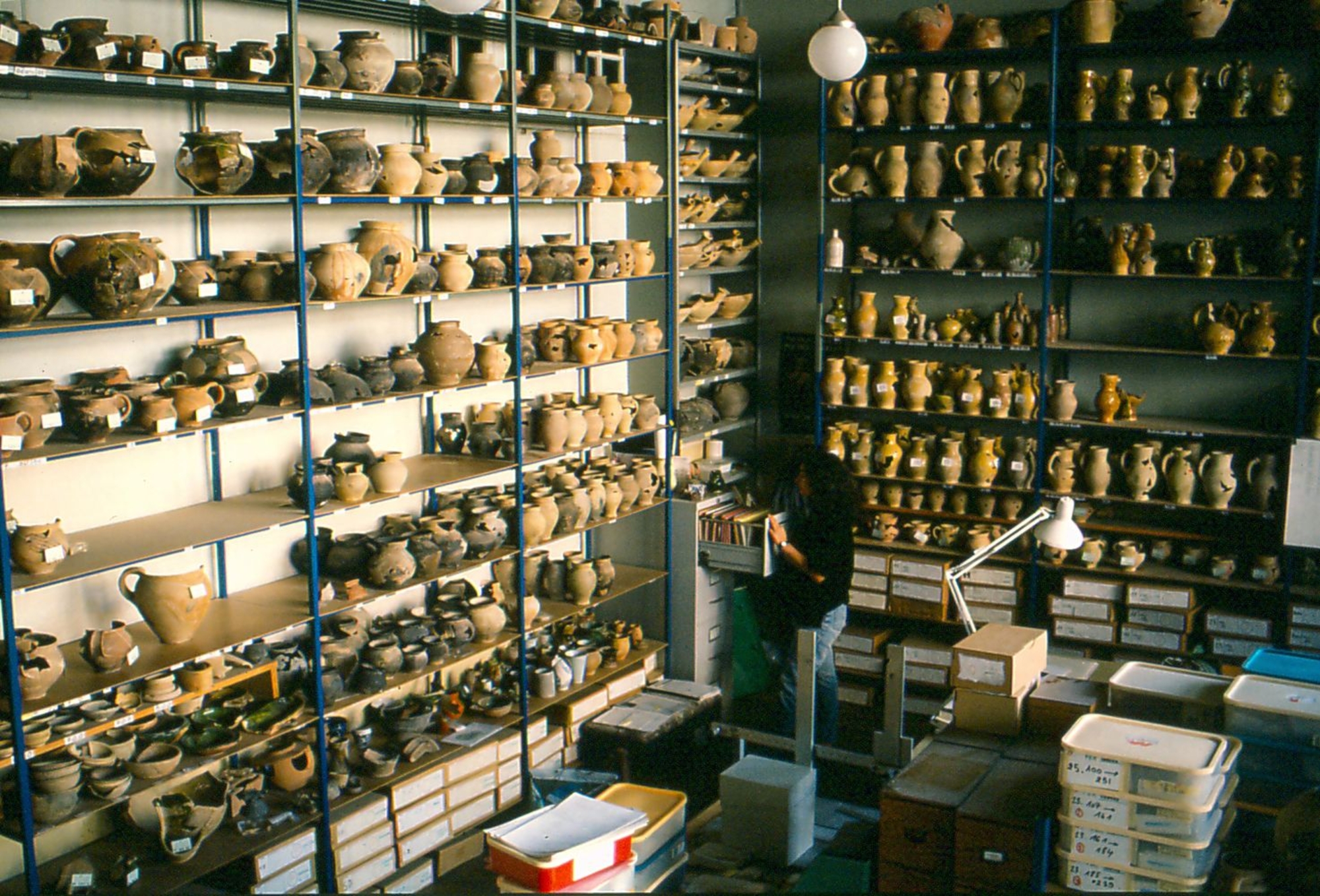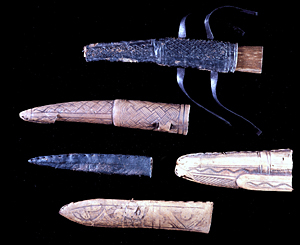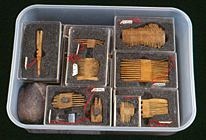- Home
- Archaeology, territory and citizenship
- Archaeology and research
- Material culture and reference collections
Selection of medieval knife sheaths.
© UASD / J. Mangin.
Over time, as research has advanced, a rich source of information has been created about the material culture of the Middle Ages. These holdings have a certain number of characteristics :
- They includes objects discovered in use contexts (domestic waste areas, alluvial deposits in defensive moats or rivers, and funerary zones) as well as production contexts (workshop structures and artisans' waste areas).
- They includes a wide variety of materials, including ceramics, metals, bone, ivory, glass, stone, textiles, leather, wood and so on, and sometimes very rare materials such as jet, mother-of-pearl, amber, byssus, etc.
- They allow researchers to take various thematic approaches to the medieval "material world": construction and urban trades, burial rituals and pilgrimages, food and food preparation, clothing and adornment, music and games, etc.
Ceramics reserves and the reference collection.
© UASD / J. Mangin.
Wooden medieval combs in a sealed container.
© UASD / J. Mangin.
A certain number of university-level research projects have studied elements of these holdings, which contain more than 40,000 pieces. Thematic publications are in preparation on subject areas that include numismatics, ceramics, leather, wood, bone, ivory and horn. Each such study addresses thousands of objects. Typological approaches allow researchers to construct reference guides within the archaeological reserves, and which will at some point be transferred to multimedia databases.



